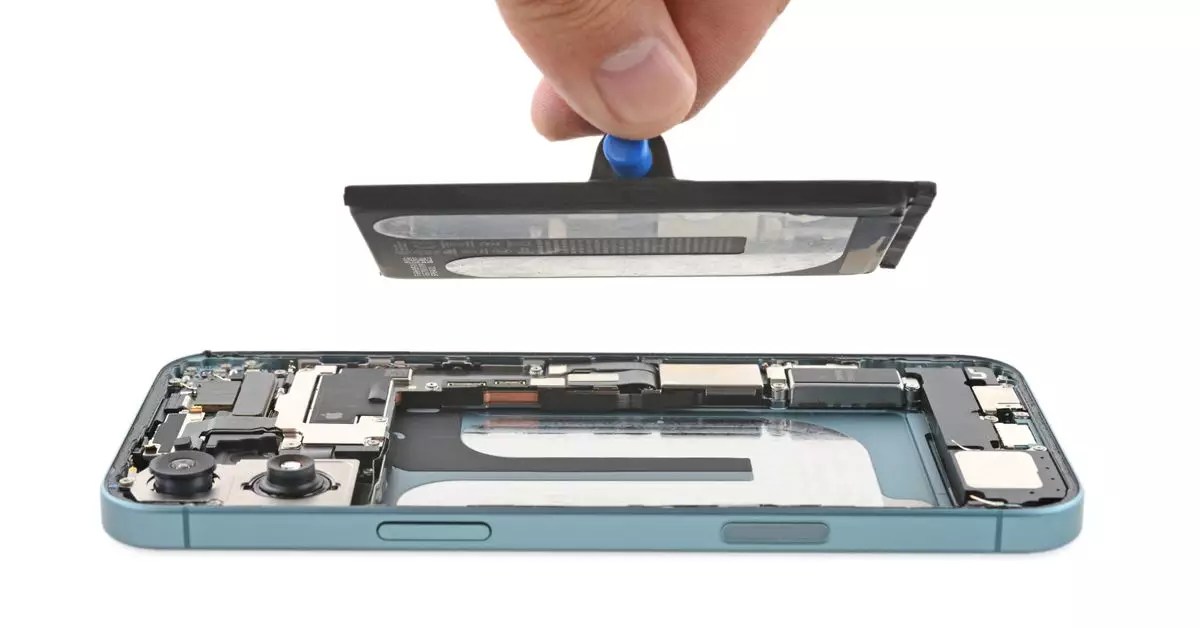In recent years, the conversation surrounding technology and its accessibility has shifted considerably, particularly regarding repairability. With each new smartphone release, companies express their commitment to sustainability and consumer empowerment through easier repair processes. Apple’s iPhone 16 lineup serves as a significant case study in this context, showcasing notable advancements in design and repairability that are worth examining.
Following the launch of the iPhone 16, renowned teardown experts at iFixit jumped at the opportunity to dissect the devices meticulously. This year, their disassembly was facilitated by Apple’s unprecedented release of repair manuals. The detailed analysis revealed several intriguing design choices, including a mechanical Camera control button that enhances user interaction. Notably, the introduction of a flex cable which senses force gives us insight into how Apple is continuously pushing the envelope in terms of user interface innovation.
Furthermore, the thermal management approach for the new A18 chip is worth noting. Apple has implemented a heat sink that is intelligently designed to dissipate heat generated during intensive computational tasks, especially those requiring AI processing power. Such engineering considerations highlight Apple’s focus on performance optimization.
One of the most transformative changes in the iPhone 16 series is undoubtedly its battery enclosure, which employs electrically debondable adhesive. This innovation aligns with Apple’s broader strategy to enhance repairability. Previously, gluing components together posed challenges for consumers and technicians alike, often resulting in device damage during repairs. By adopting this new adhesive, Apple is paving the way for easier battery replacement—a welcome change for repair advocates.
The mechanics of this adhesive are fascinating. According to iFixit, once the battery is disconnected from the mainboard, applying an electric current allows the adhesive to release the bond. This method allows for effortless removal of the battery and opens the door for a more user-friendly repair process. As described, even a modest power source can effectively remove the battery, marking a significant leap toward sustainability and practicality in device maintenance.
While early reports indicate that removing the battery using the new method is efficient, there are concerns regarding the longevity and reliability of this solution. Apple has cautioned that over time, the efficacy of the adhesive may diminish, which could complicate future repairs. Nevertheless, the potential for success here is undeniable.
With the integration of these tools, Apple is not merely pursuing short-term gains; they are contributing to a larger movement aiming to empower consumers. As repairability becomes a critical factor in purchasing decisions, businesses that embrace these innovations stand to benefit significantly in a market increasingly inclined toward sustainability and efficiency.
The iPhone 16 lineup exemplifies a pivotal evolution in repairability. By adopting innovative design features and a more thoughtful approach to adhesive technology, Apple is making strides that resonate with environmentally conscious consumers and tech enthusiasts alike. This ongoing journey toward enhanced repairability not only addresses current market demands but also signals a broader shift in how technology companies can approach product design in the age of sustainability. As Apple continues down this path, the industry watches closely, eager to see whether these changes set a standard for future devices.


Leave a Reply